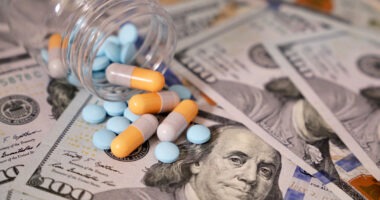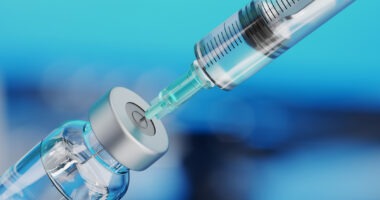US Biosciences Industry Rebounds
A recent analysis by Battelle and the Biotechnology Industry Organization (BIO), released last week at the BIO International Convention in San Diego, shows continued growth for the US biosciences industry. A study analyzing US bioscience industry growth over the last eleven years, through the recent recession and early economic recovery, reveals positive trends. The report concludes that the US biosciences industry recorded growth from 2001-2012, weathered the deep economic recession better than most industries and is once again growing.
The report, Battelle/BIO State Bioscience Jobs, Investments and Innovation 2014, issued last week at the Biotechnology Industry Organization (BIO) Annual Convention in San Diego, reveals a robust bioscience sector that has weathered difficult economic conditions and is on a course for continued growth. The state-by-state industry assessment finds US bioscience firms directly employ 1.62 million people, a figure that includes nearly 111,000 new, jobs created since 2001. Within the private sector, the bioscience industry has contributed an additional 6.24 million jobs through the indirect employment effect, yielding a total employment impact of 7.86 million jobs. The analysis defines the biosciences industry into five main sectors: agricultural feedstock and chemicals; bioscience-related distribution; drugs and pharmaceuticals; medical devices and equipment; and research, testing, and medical laboratories.
The US bioscience industry weathered the recession much better than the overall economy and other leading knowledge-based industries. While national private sector employment fell by 3.1% from the outset of the recession in 2007 through 2012, bioscience industry employment fell 0.4%. While employment has almost returned to its pre-recession level, the economic output of the bioscience industry has expanded with 17% growth since 2007, almost twice the national private sector nominal output growth. For the drugs and pharmaceuticals sector, the report estimated US employment at 284,331 in 2012. Overall, employment in the drug and pharmaceuticals sector declined 10.9% for the period of 2007 to 2012 and declined 7.1% in the period of 2001 to 2012. Since 2007, employment declines have averaged 2.3%, but in 2012, the sector stabilized with employment declining by 0.3%. In 2012, the drugs and pharmaceuticals sector accounted for 17% of the US biosciences industry’s employment. For the period 2007 to 2012, only two bioscience sectors experienced positive employment growth: the research, testing and medical laboratories sector (+9.7%) and the medical devices and equipment sector (+1.4%). The drugs and pharmaceutical sector experienced the largest employment decline (-10.9%) in the 2007 to 2012 among the biosciences sectors; also showing employment declines during this period were the bioscience-related distribution sector (-3.9%) and agricultural feedstocks and chemicals sector (-1.0%).
On the positive side, the average annual wage in the drugs and pharmaceutical sector was the highest among all bioscience sectors and also outpaced other industries. In 2012, the average annual wage in the drugs and pharmaceuticals sector was $106,576, which exceeded other biosciences sectors. In 2012, the average annual wage in the research, testing, and medical laboratories sector was $91,248, $85,188 in the bioscience-related distribution sector, $75,828 for the agricultural feedstock and chemicals sector, and $75,695 for medical devices and equipment sector.
The study presents data available on national, state and metropolitan area bioscience industry employment and recent trends from 2001 to 2012, though much of the assessment focuses on the industry’s more recent performance from 2007.The report also presents a set of key bioscience performance metrics and profiles recent university and state initiatives designed to accelerate growth of the biosciences and other technology industries.
Additional highlights from the industry analysis include:
—The research, testing and medical laboratories subsector has been the primary engine of bioscience industry job growth-increasing employment by 28% since 2001 and by nearly 10% since 2007. Through strong economic multiplier impacts, each bioscience job generates an additional 3.9 jobs in the US economy (employment multiplier of 4.9).
—The industry is well distributed across the United States and plays a major role as an economic driver. Thirty-three states and Puerto Rico have an employment specialization (20% or more concentrated than the nation) in at least one of the five bioscience subsectors, which include agricultural feedstock and chemicals; bioscience-related distribution; drugs and pharmaceuticals; medical devices and equipment; and research, testing and medical labs.
—In the recent 2007 to 2012 period, which includes the recession and early years of the recovery, 28 states had overall job gains in the biosciences. Of the nation’s 381 metropolitan areas, 216 have a specialized employment concentration in at least one of the bioscience subsectors.
—Twenty-nine regions have a specialized employment concentration in at least three of the five subsectors.
Highlights from the analysis of innovation performance metrics include:
—The number of bioscience-related patents issued in the US has steadily increased every year since 2009, with a growth rate that has exceeded that for all patents. The drugs and pharmaceuticals sector accounted for 23,681 patents between 2009 and 2013, second only to the number of patents issues for surgical and medical instruments, which was 31,466 for this period.
—Academic R&D in the biosciences saw a $4.7 billion increase from 2009 through 2012 of $4.7 billion, or 14% increase.
—Battelle/BIO see signs of stress in the bioscience innovation ecosystem that are a concern for the future if not addressed. These include declines in federal funding for biomedical research through the National Institutes of Health as well as recent declines in risk capital invested in the biosciences.




